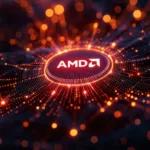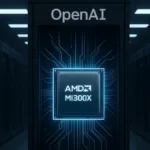ARM says it remains on track to claim approximately 10%-20% of the notebook PC market by 2014 or 2015.
Although the lucrative space is currently dominated by Intel’s x86 architecture, the WinTel status quo is expected to be shaken up by the advent of Microsoft Windows 8 RT, which will support ARM’s RISC-based chips with a sleek new Metro interface.

Meanwhile, Intel is attempting to encroach on ARM’s territory by entering the hyper-competitive smartphone market – with its first Android powered XOLO X900 smartphone hitting the streets of India in May.
However, ARM CEO Warren East said he expects Intel to control no more than 5-10% of the smartphone market within a few years.
According to East, while the XOLO X900 is a “perfectly adequate smartphone,” the device, along with its successors, will be competing with about 20 other chip suppliers and their respective handsets.
“It’s going to be quite hard for Intel to be much more than just one of several players,” East told Dow Jones Newswire. “But they’ll be a perfectly credible player.”
The CEO also commented on Windows 8, noting that ARM-based chip makers such as Nvidia, Qualcomm and TI wouldn’t be targeting all PC end users, especially those primarily concerned with legacy applications.
“If you look at a lot of consumer PCs, people just want to run an Internet browser, an email package, some Office applications and Adobe Photoshop or something like that, and not much else,” he explained. ”Therefore, we can put ARM processors into the heart of PCs to target a lot of the use requirements.”
In addition, East said he expected ARM chips to be significantly cheaper ($20) than competing Intel processors, which could run approximately $80- $200 for Santa Clara’s Core line of PC processors.
But Intel spokesperson Jon Carvill emphasized that Santa Clara’s Atom chips will be “very price competitive with ARM licensees” when it comes to devices such as smartphones, tablet PCs and hybrids.
“Intel chips will offer tremendous capabilities and expertise in performance, compatibility and power efficiency that will differentiate platforms running Intel architecture from new entrants to the market,” Carvill added.






